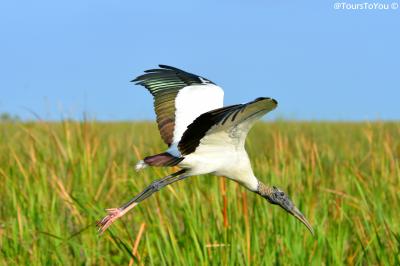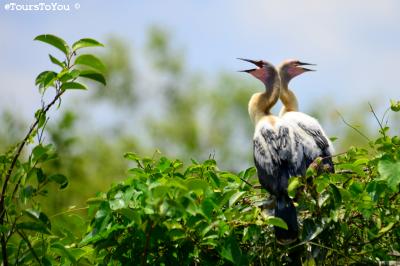|
| |
Photo Essay: Feathered FriendsPhotos: Felipe Correa | Narrative: Erin White Black skimmer Black skimmerRynchops niger Habitat loss is one of the most significant threats the black skimmer faces. As human development encroaches, the black skimmer's breeding grounds, the beaches, experience an increase in foot traffic. Since each "nest" is not much more than a scraped-up depression in the sand, and since the eggs and chicks are well-camouflaged against predators, humans may unwittingly stumble into a nest without realizing they have done so. Non-human threats to the black skimmer include predators and tidal impact. A good storm can wipe out the efforts of an entire breeding season. Tropical Storm Andrea recently wiped out the entire nesting colony of black skimmers on Anna Maria Island. There are reports that a few hundred pairs have returned to those breeding grounds to try again.  Wood Stork Wood StorkMycteria Americana With breeding populations on the decline, the wood stork was listed as endangered in 1984. Habitat destruction and interruptions in water flow are typically blamed for the decline in wood stork population. Very often, human water management efforts only serve to disrupt the natural cycles of drought and flooding that help wood storks to feel secure about breeding. If the nesting area is not sufficiently flooded as to deter predators, they will seek better breeding grounds elsewhere. And if the feeding area's water does not shrink sufficiently to cause concentrations of food, the wood stork will leave to find such concentrations elsewhere. The wood stork can adapt some behaviors to survive - for instance, they will nest in smaller colonies if the available habitat cannot sustain a larger colony. Some states within their range are taking actions to help support the wood stork population. Artificial ponds and water management techniques geared toward helping to attract and sustain wood stork colonies are practiced in South Carolina and Georgia.  Anhinga AnhingaAnhinga anhinga "Anhinga" is said to be a Brazilian word meaning "devil" or "snake" bird. When the anhinga swims, it often does so with its body completely submerged, the head and neck appearing as though a snake was walking on water. The conservation status of the anhinga is "least concern" but they are still protected under the Migratory Bird Treaty (with Canada) Act of 1918. It is unlawful to take, hold, transport, sell, or kill them. These protections extend to their nests, feathers, and eggs. Enacted during a time when birds were hunted for their feathers, this law applies to some 800 species of birds. The range of the anhinga extends from the southern coastal United States through coastal Central America and into a significant portion of South America. They are resident from Florida southward, and may spend summers in the states immediately to the north and west of Florida. Felipe Correa of Tours To You shares his passion for birding through his other passion - photography. These photos are are some of Felipe's captures from this past spring, taken at Tiger Tail Beach and Shark Valley. BACK to the Florida SEE Grapevine, JULY 2013 Annual Meeting Edition | |
| The Florida SEE Grapevine - July, 2013: The Annual Meeting Issue |